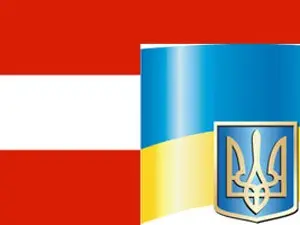For nearly 150 years, until 1918 when the Austro-Hungarian Empire collapsed, Austria ruled a portion of modern-day western Ukraine, sometimes as far east as Ternopil and Chernovtsi oblasts.
Today Ukrainians look back at the Austrian period with fondness and as a time when strides were made in establishing national consciousness, because of the relatively more liberal policies that came from Vienna.
JOIN US ON TELEGRAM
Follow our coverage of the war on the @Kyivpost_official.
The Austrian influence on government, transportation and architecture is still felt in the territory known as Halychyna.
Negotiations among Russia, Prussia and Austria over the first partition of Poland led in 1772 to Austria receiving parts of Halychyna.
The region’s largest city, Lviv, grew as a commercial, administrative and cultural center. The first newspaper on Ukrainian territory, the French-language Gazette de Leopol, started there in 1776. That same year, Lviv’s first city theater was founded.
When serfdom was abolished in the Austrian Empire in 1848, Ukrainians launched their struggle for political representation and national autonomy. The climate of succeeding decades was aptly reflected by the great reformer and writer Ivan Franko: “I am a son of the people, the son of a nation on the rise.”
By the 1880s, changes had taken place in parliamentary practices, in local government and the public school system. Newspapers were established. Dilo, the region’s most influential paper, began publishing in January 1880.
Thanks to the more liberal policies of the Austrian regime, Lviv became the heart for many organizations critical to the development of Ukrainian identity. Banking, savings and loan institutions appeared as branches of Austrian banks, or local ventures by Poles, Jews and Ukrainians, the region’s dominant ethnic groups.
The 19th century saw improvements in the region’s infrastructure, with Lviv becoming an important railway junction in Austria-Hungary and Eastern Europe.
The outbreak of World War I in 1914 brought persecution of Ukrainians by both Russians and Austrians. Russians suppressed all Ukrainian cultural and political activities and exiled many prominent persons to Siberia. Retreating Austrians executed Ukrainians who were suspected of sympathizing with Russia.
Austrians recaptured western Ukraine in the spring of 1915. In an attempt to save the Habsburg Monarchy, social and political reforms were promised, but Ukrainians strove for independence.
In Russia, following the revolution in March 1917, a provisional government was headed by Alexander Kerensky. It introduced some democratic freedoms and lifted restrictions on Ukrainian cultural and political life.
All political exiles were allowed to return home. Ukraine gained autonomy in April 1917 through the formation of the Central Rada headed by historian Mykhailo Hrushevskiy.
In March, the German-Austrian offensive dislodged Bolsheviks from Kyiv and the Central Rada returned to the Ukrainian capital.
Disintegration of the Habsburg Empire started in 1918. In October 1918, Ukrainian political leaders formed a state called Western Ukrainian National Republic consisting of eastern Halychyna, western Volhynia and northern Bukovyna.
It did not, of course, live for long.
You can also highlight the text and press Ctrl + Enter




